Best Bridges, Canals and Singel of Amsterdam
Say Amsterdam and the first thing that comes to mind are canals and bridges. No wonder because Amsterdam canals are true eye-catchers. There are about two hundred canals in the city. Originally, the canals were a practical solution to a problematic situation. Amsterdam was built on marshy land, where the groundwater was particularly high. By digging the canals, good drainage of the groundwater was ensured. At the same time the excavated soil was used to raise the building sites.
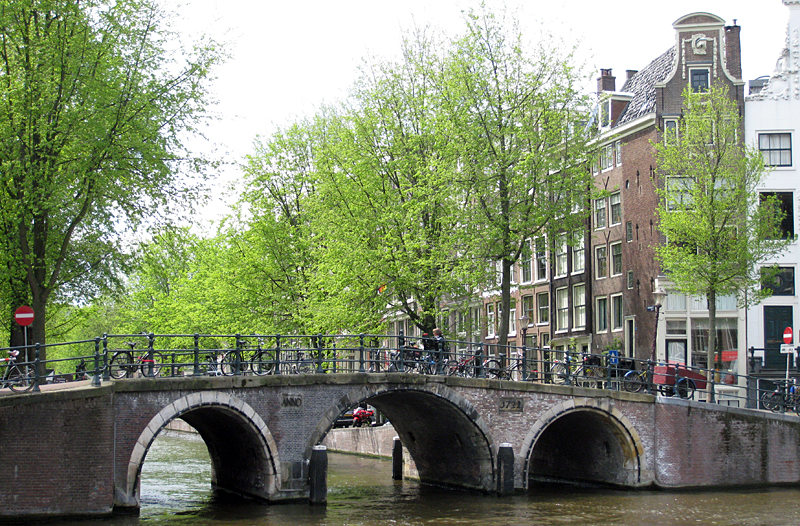
The Canal Belt
The canal belt, the characteristic crescent of canals, was created in the 17th century as major urban expansion project. The Herengracht, Keizersgracht and Prinsengracht were dug and encircled the historic centre. Together with the existing Singel-canal, they have a length of more than ten kilometers, an average depth of 2.4 meters and a width of approximately 27 metres. Along the new canals, houses for the genteel bourgeoisie were built, many of them still stand today.
Canal or Singel?
Canal, or gracht in Dutch, is a man-made waterway, especially across a city. The function of a canal is diverse, such as drainage, transport, defense and sewerage.
A Singel is also a canal but a special type. It encircled the city centre and marked the city boundary. Today, Singel is within the city bounds. Singel served to defend the city, but also regulated the water level and flushing direction of the canals in the city. They were not meant for the transportation of goods.
Clean Water in the Canal
In the seventeenth century, the water in the canals was refreshed twice a day: at low tide and at high tide. In those days the canals served as sewers. Water from the Amstel River was used but only in winter. In summer the water level of the river was too low and water from the IJ-river was used. The Amstel and IJ rivers are tidal rivers.
Today pumping stations refresh the water in the canals. But only when the oxygen content of the water gets too low.
The pumping stations and locks in and around Amsterdam ensure that the water level in the canals remains at the correct height so that the quays are not flooded.
Hildo Krop
In the early 20th century, many bridges were built and renovated because of the increasing traffic. Narrow bridges were widened and humpback bridges replace by flat bridges. Hildo Krop (1884-1970), Dutch sculptor and decorative artist, was the city sculptor of Amsterdam and made many sculptures that still. decorate many of the bridges.
TIP: Book here one of the Amsterdam canal cruises
Seven Eye-catching Bridges
1. Magere Brug (Skinny Bridge)
The Magere Brug one of the most photogenic bridges in Amsterdam spans the Amstel River. It is particularly enchanting at night when illuminated by hundreds of lights. It is a romantic spot and a must-visit attraction in the city. According to local legend, if you kiss your loved one on the bridge at night, it will bring you eternal love.
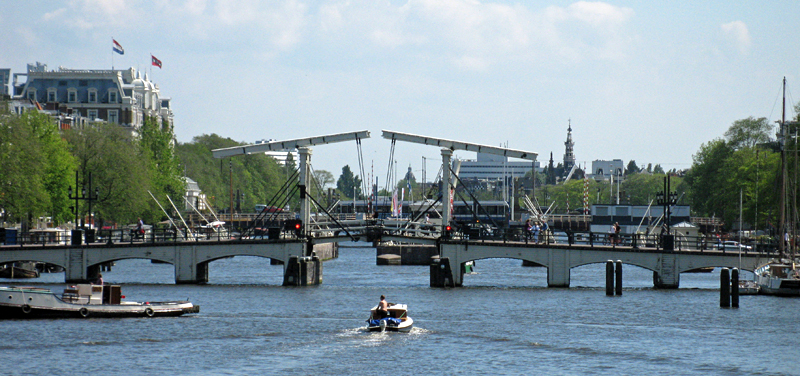
2. Torensluis
Torensluis is the oldest and widest bridge in Amsterdam and spans the Singel Canal. It is a historic bridge with a tower in the centre, dating back to the 17th century. The bridge offers a great view of the bustling waterway and is surrounded by vibrant streets with shops and cafes. On the bridge is a sculpture of Multatuli, pseudonym of Eduard Douwes Dekker (1820-1887), the Dutch author of the novel Max Havelaar in which he denounced the abuses of colonialism in the Dutch East Indies (today’s Indonesia).
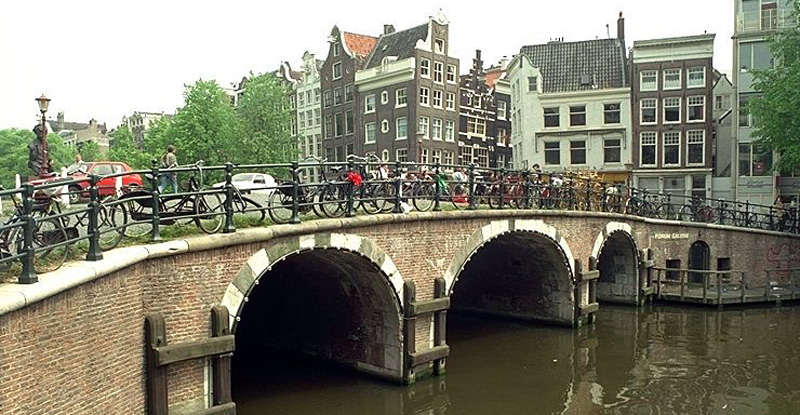
3. Blauwbrug (Blue Bridge)
Blauwbrug is another significant bridge across the Amstel River. It connects the Rembrandtplein and Waterlooplein areas. The bridge has a distinctive blue colour and offers beautiful views of the river and the surrounding architecture. It provides a great photo opportunity, especially with the iconic Magere Brug in the background.
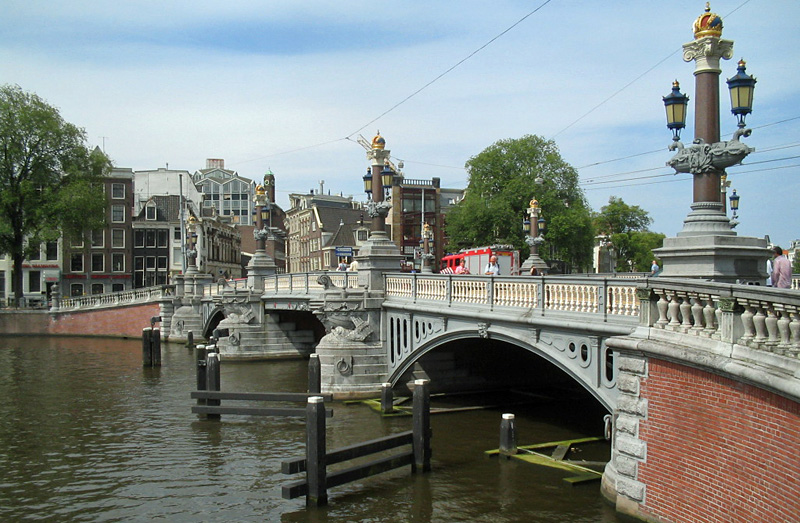
4. Python Bridge
Python Bridge is a modern, eye-catching foot bridge in the Eastern Docklands area of Amsterdam. Its unique shape resembles a coiling snake, hence the name Python. Its official name is Hoge Brug (High Bridge).
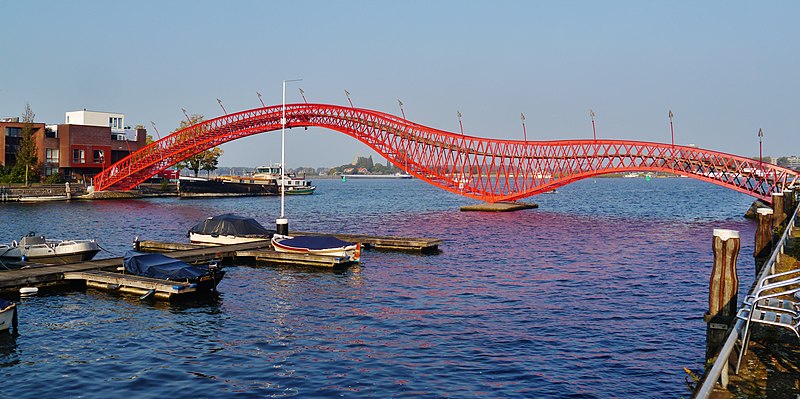
5. Johan Cruijff Bridge
Johan Cruijff Bridge named after the legendary Dutch soccer player is located in Amsterdam-East. It a footbridge and also used by cyclists.
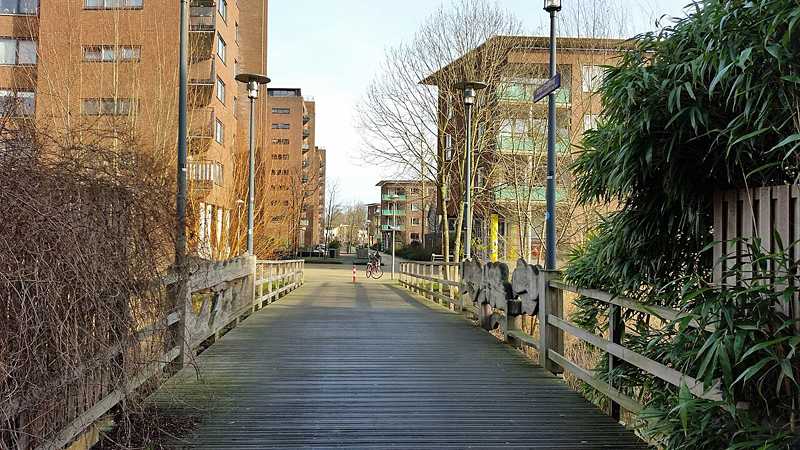
6. Bridge of Fifteen Bridges
This is a very special bridge because from this bridge you can see fifteen other bridges that span the intersection of three canals: Reguliersgracht, Herengracht and Keizersgracht. When you the bridges you see, you only get to fourteen. Bridge fifteen is the one you are standing on.
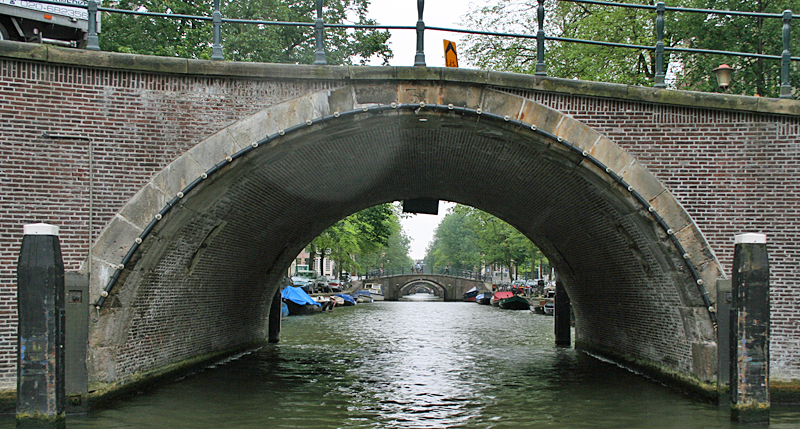
7. P.L. Kramer Bridge
The P.L. Kramer Bridge spans the Noorder-Amstelkanaal next to the Amsteldijk in Amsterdam-Zuid,
This bridge in Amsterdam School style was designed by architect Piet Kramer who worked for the municipality as an aesthetic advisor. He designed more than 200 bridges; at the Leidsestraat, the Vijzelstraat, the Stadhouderskade and also at the Amsterdamse Bos. The bridges are recognizable by the robust ironwork and imaginative sculptures by the Dutch sculptor Hildo Krop.
This bridge has a bridge keeper’s house and is decorated with several sculptures made by Krop. Figures of seals and knights pose forever at the foot of the bridge, and it is said that they are there to protect the Amstel.
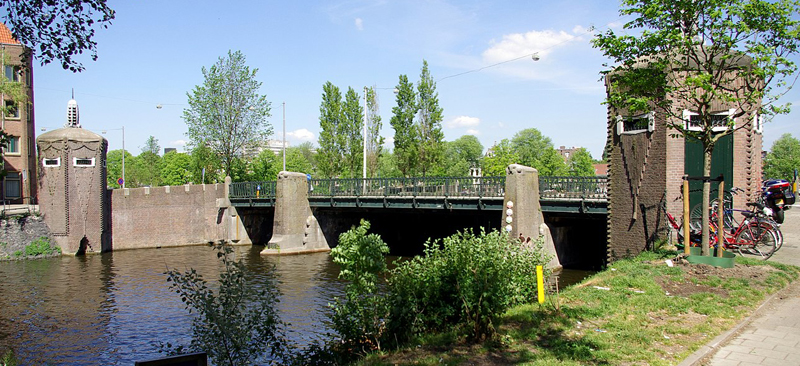
Next article
Tulip Mania in Seventeenth Century Amsterdam
Previous article
Best French Restaurants for the Perfect Evening out
Photos Marianne Crone and Wiki Commons



